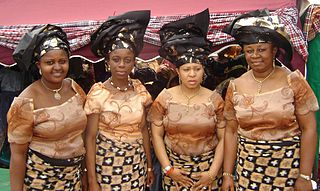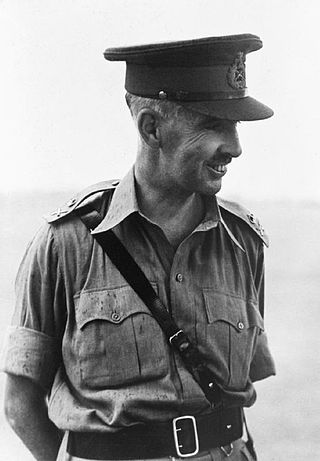
The color khaki is a light shade of tan with a slight yellowish tinge.

A raincoat is a waterproof or water-resistant garment worn on the upper body to shield the wearer from rain. The term rain jacket is sometimes used to refer to raincoats with long sleeves that are waist-length. A rain jacket may be combined with a pair of rain pants to make a rainsuit. Rain clothing may also be in one piece, like a boilersuit. Raincoats, like rain ponchos, offer the wearer hands-free protection from the rain and elements; unlike the umbrella.

A Harrington jacket is a lightweight, waist-length jacket made of cotton, polyester, wool or suede. Designs often incorporate traditional Fraser tartan or checkerboard-patterned lining.
Oilskin is a waterproof cloth used for making garments typically worn by sailors and by others in wet areas. The modern oilskin garment was developed by a New Zealander, Edward Le Roy, in 1898. Le Roy used worn-out sailcloth painted with a mixture of linseed oil and wax to produce a waterproof garment suitable to be worn on deck in foul-weather conditions. Oilskins are part of the range of protective clothing also known as foul weather gear.

A combat uniform, also called field uniform, battledress or military fatigues, is a casual type of uniform used by military, police, fire and other public uniformed services for everyday fieldwork and combat duty purposes, as opposed to dress uniforms worn in functions and parades. It generally consists of a jacket, trousers and shirt or T-shirt, all cut to be looser and more comfortable than more formal uniforms. Design may depend on regiment or service branch, e.g. army, navy, air force, marines, etc. In the army branches, fabrics tend to come in camouflage, disruptive pattern or else green, brown or khaki monochrome, in order to approximate the background and make the soldier less visible in nature. In Western dress codes, field uniform is considered equivalent to civilian casual wear. As such, field uniform is considered less formal than service dress uniform, generally aimed at office or staff use, as well as mess dress uniform, and full dress uniform.

A duster is a light, loose-fitting long coat. The original dusters were full-length, light-colored canvas or linen coats worn by horsemen to protect their clothing from trail dust. These dusters were typically slit up the back to hip level for ease of wear on horseback. Dusters intended for riding may have features such as a buttonable rear slit and leg straps to hold the flaps in place. For better protection against rain, dusters were made from oilcloth and later from waxed cotton.

A sport coat, also called a sport jacket, is a men's smart casual lounge jacket designed to be worn on its own without matching trousers, traditionally for sporting purposes. Styles, fabrics, colours and patterns are more varied than in most suits; sturdier and thicker fabrics are commonly used, such as corduroy, suede, denim, leather, and tweed.

J. Barbour & Sons Ltd is an English luxury and lifestyle brand founded by John Barbour in 1894 that designs, manufactures and markets waxed cotton outerwear, ready-to-wear, footwear and accessories under the Barbour and Barbour International brands. Founded in South Shields, England, as an importer of oil cloth, J. Barbour and Sons Ltd became known for its waxed cotton jackets, a common element of British country clothing; some refer to any waxed cotton jacket, regardless of brand, as a "Barbour jacket". J. Barbour and Sons Ltd holds royal warrants for the supply of ‘waterproof and protective clothing’ from the Duke of Edinburgh (1974), Queen Elizabeth II (1982) and King Charles III (1987).

A pelisse was originally a short fur-trimmed jacket which hussar light-cavalry soldiers from the 17th century onwards usually wore hanging loose over the left shoulder, ostensibly to prevent sword cuts. The name also came to refer to a fashionable style of woman's coat-like garment worn in the early-19th century.

The wrapper, lappa, or pagne is a colorful garment widely worn in West Africa by both men and women. It has formal and informal versions and varies from simple draped clothing to fully tailored ensembles. The formality of the wrapper depends on the fabric used to create or design it.

Belstaff is a clothing brand owned by British chemicals company Ineos. The company was founded in 1924 by Eli Belovitch and his son-in-law Harry Grosberg in Longton, Stoke-on-Trent, Staffordshire. The name Belstaff is a combination of Eli's surname and his Staffordshire home. Belstaff was the first company to use wax cotton in the manufacturing of waterproof apparel for motorcycling.

Fjällräven is a Swedish brand specialising in outdoor equipment—mostly upscale clothing and luggage. It was founded in 1960 by Åke Nordin (1936–2013). The company went public in 1983 with an over-the-counter listing in Stockholm. Since 2014, Fjällräven has been a subsidiary of Fenix Outdoor International AG, which is listed on the Stockholm Stock Exchange. The group also includes the Tierra, Primus, Hanwag, Brunton, and Royal Robbins brands. The CEO of Fenix as of March 2018 was Martin Nordin, the oldest son of Åke Nordin.
Dame Margaret Barbour is a British businesswoman and philanthropist best known as the current Chairman of J. Barbour & Sons.
Ventile, is a registered trademark used to brand a special high-quality woven cotton fabric first developed by scientists at the Shirley Institute in Manchester, England. Originally created to overcome a shortage of flax used for fire hoses and water buckets, its properties were also useful for pilots' immersion suits, but expensive and leaky if exposed to sweat or oils.

HMS Ursula was a U-class submarine, of the first group of that class constructed for the Royal Navy. The submarine entered service in 1938 and saw action during the Second World War in the North and Mediterranean Seas.

Khaki drill (KD) is the British military term for a type of fabric and the military uniforms made from them.

Waxed cotton is cotton impregnated with a paraffin or natural beeswax based wax, woven into or applied to the cloth. Popular from the 1920s to the mid-1950s, the product, which developed from the sailing industry in England and Scotland, became commonly used for waterproofing. It has been replaced by more modern materials but is still used by the country sports community. The main drawbacks are two: waxed fabric is not very breathable and tends to be heavier and bulkier than modern synthetic waterproof materials.
A riding coat or jacket is a garment initially designed as outerwear for horseback riding. It protects the wearer's upper clothes from dirt and wear, and may provide additional protection in case of falls.

British country clothing or English country clothing is the traditional attire worn by men and women in rural Britain; it is the choice of clothing when taking part in outdoor sports such as equestrian pursuits, shooting or fishing and during general outdoor activity, such as walking, picnicking, or gardening. It is also worn at events such as horse races, country weddings, beer festivals and country fairs.

C.P. Company is an Italian apparel brand founded in 1971 by designer Massimo Osti. Initially called Chester Perry by the suggestion of his fashion entrepreneur friend Corrado Zannoni, its name was changed in 1978 following a lawsuit by Chester Barrie and Fred Perry, for the use of their first name and surname.















